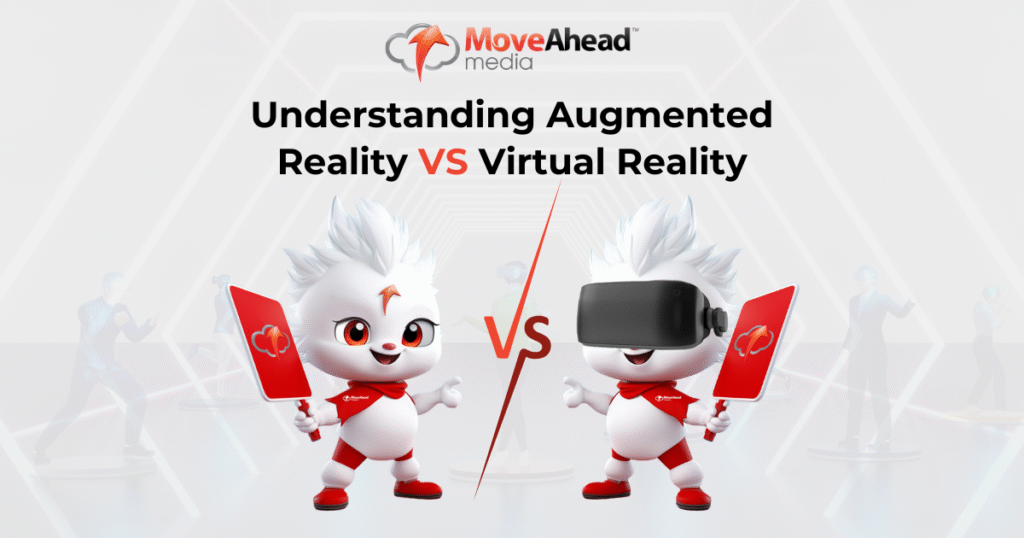The world of technology is constantly evolving, and two terms that have become increasingly popular in recent years are augmented reality (AR) and virtual reality (VR). But what do they mean?
While both technologies have the potential to revolutionise a great number of industries, they are fundamentally different in terms of their functionality, applications, and user experience – and it’s important to understand the distinction between the two if you are to leverage them in business effectively.
In this blog post, we will delve into the key differences between AR and VR, define them for you, and explore their respective strengths and weaknesses.
Are you ready, Player One?
Understanding Augmented Reality (AR)
Augmented reality is a technology that superimposes digital information and images onto the real world, using a device’s camera and display.
AR enhances the user’s reality by adding virtual objects, sounds, or other sensory inputs that can be seen, heard, or even felt.
Unlike VR, which immerses users in a completely digital environment, AR blends the digital and physical worlds to create a more interactive and immersive experience.
Examples of AR technology include:
- Pokémon Go: a popular mobile game that uses augmented reality to bring virtual Pokémon into the real world.
- Snapchat: filters utilise AR technology to overlay digital content onto real-world imagery.
- IKEA Place: an app that allows users to see how furniture would look in their home before making a purchase.
- Google Maps: an app that uses AR to provide users with directions and information about their surroundings.
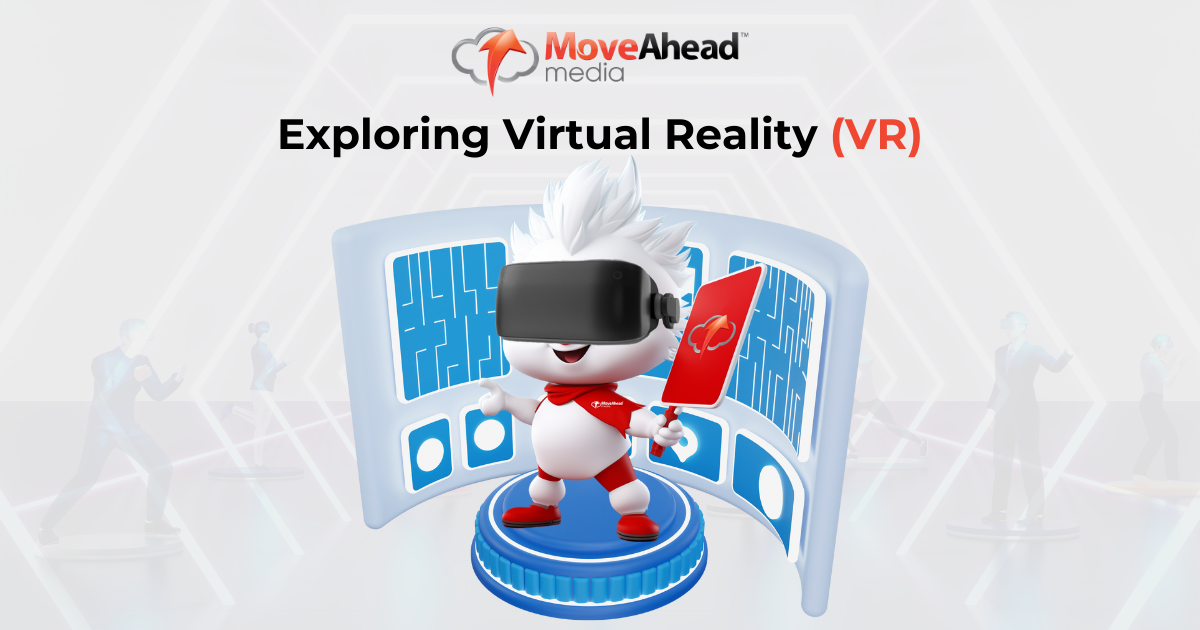
Exploring Virtual Reality (VR)
Virtual reality, on the other hand, creates a completely digital environment that users can interact with. VR technology uses a headset or other device to immerse users in a virtual world, blocking out the physical environment and allowing them to explore some truly remarkable scenarios. Users can see, hear, and even feel the virtual world, making it a truly immersive experience!
Examples of VR technology include:
- Oculus Rift: a popular virtual reality headset used for gaming and other virtual experiences.
- HTC Vive: another VR headset that offers advanced tracking and motion controls.
- Google Cardboard: a low-cost VR viewer that uses a smartphone to create a basic VR experience.
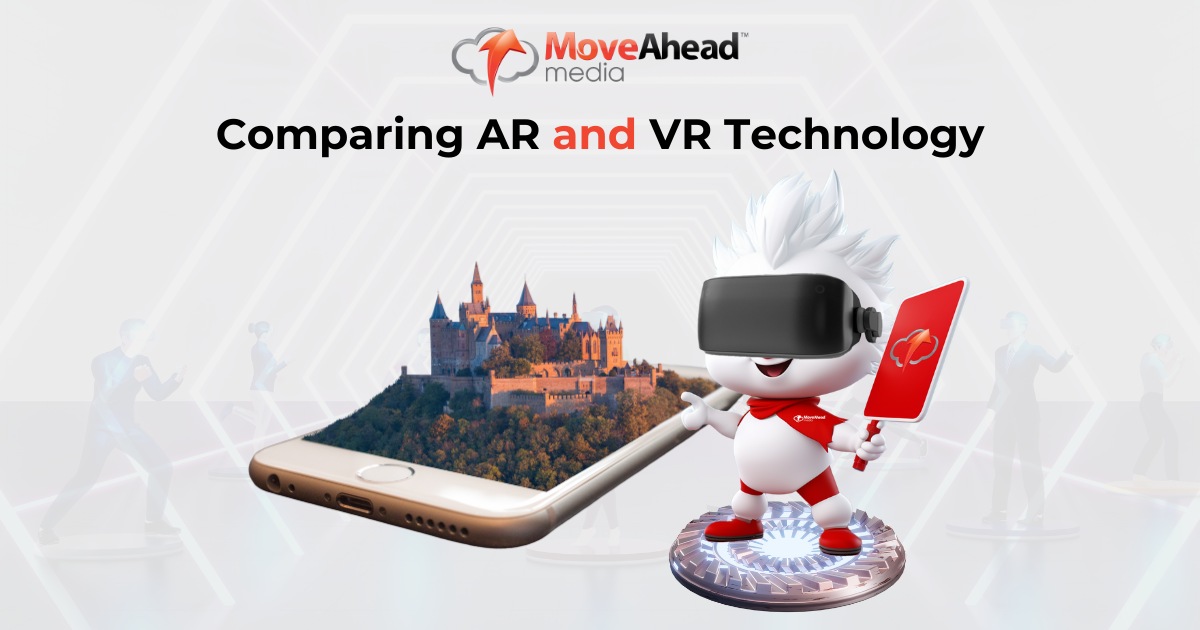
Comparing AR and VR Technology
When it comes to comparing AR and VR technology, there are several key differences to consider:
- Immersion: VR technology immerses users in a completely digital environment, while AR technology enhances the real world with digital elements. If escapism is what you are after, VR wins this round.
- User Experience: VR provides a more immersive and interactive experience, while AR is more of an enhancement to the user’s reality. Depending on the application, both technologies can provide an exciting and often thrilling user experience.
- Functionality: VR is typically used for gaming, entertainment, and other virtual experiences, while AR is used for a wider range of applications, including education, marketing, and product design. In short, if you are interested in introducing new technology to your business, AR has more commercial viability.
- Cost: VR technology is generally more expensive than AR technology, particularly when it comes to high-end headsets and virtual reality gaming systems.
Let’s break both technologies down further for easy cross-referencing:
AR:
- AR augments real-world scenes.
- When using AR, users always have a sense of presence in reality.
- AR is roughly 25% virtual and 75% real life.
- Enjoy partial immersion with some virtual objects in real-time.
- No AR headset is necessary (though AR glasses with AI capabilities are currently in development by META).
- AR can be used to enhance both real and virtual worlds.
VR:
- VR completely immerses you in a virtual world.
- In VR your visual senses are controlled by the system.
- VR is roughly 75% virtual and 25% real.
- Enjoy full immersion with VR.
- VR headsets / devices are required.
- VR isolates the user from the real world and immerses them in a new, temporary reality.
- VR is typically used to enhance fictional reality for the gaming industry.
Ultimately, the main difference between AR and VR is the level of immersion. When using AR technology, you are still interacting with your physical environment, while using a device (typically a smart phone) to enhance the environment with digitally augmented elements. On the other hand, VR devices completely immerse your visual periphery in a digital world.
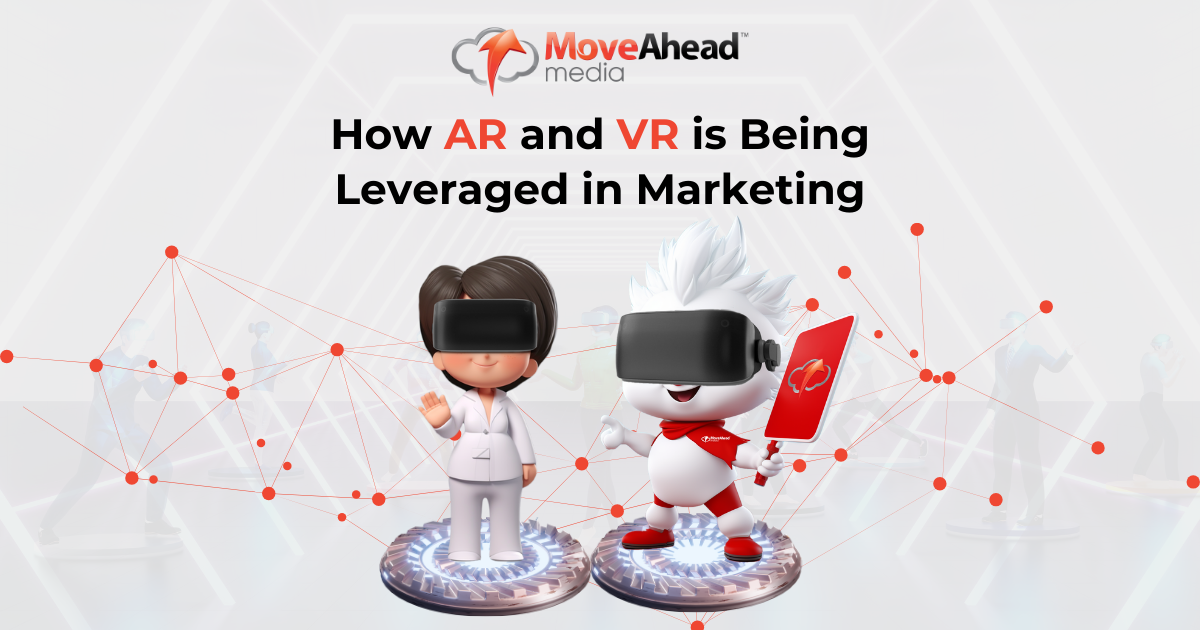
How AR and VR is Being Leveraged in Marketing
Here’s a quick look at how AR and VR technologies are being utilised in modern marketing:
Augmented reality and marketing:
- AR is an emerging trend in the sales and marketing arena. Users can enjoy unique experiences with the convenience of their own mobile devices.
- AR can be great for increasing brand awareness in a fun and quirky way.
- AR can be utilised to allow potential customers to ‘try’ products or services before they buy them (e.g., the Ikea Place app mentioned earlier).
Virtual reality and marketing:
- VR can allow you to bridge the gap between experience and action! Replacing physical experiences with virtual ones is an exciting new way to promote products and services.
- VR can be highly effective at not only showcasing current products, but future advancements as well – thus getting your audience more invested and engaged with your development.
- The exciting thing about VR technology, particularly in the marketing arena, is that audiences are actively seeking out VR brand experiences, as opposed to ducking and weaving from pop-up ads.
Are you interested in utilising AR and VR to create new means of engaging with your audience and bolstering the overall user experience when interacting with your brand?
If so, as a leading user experience (UX) design agency in Bangkok, we’re well-positioned to help you embrace the future of UX!
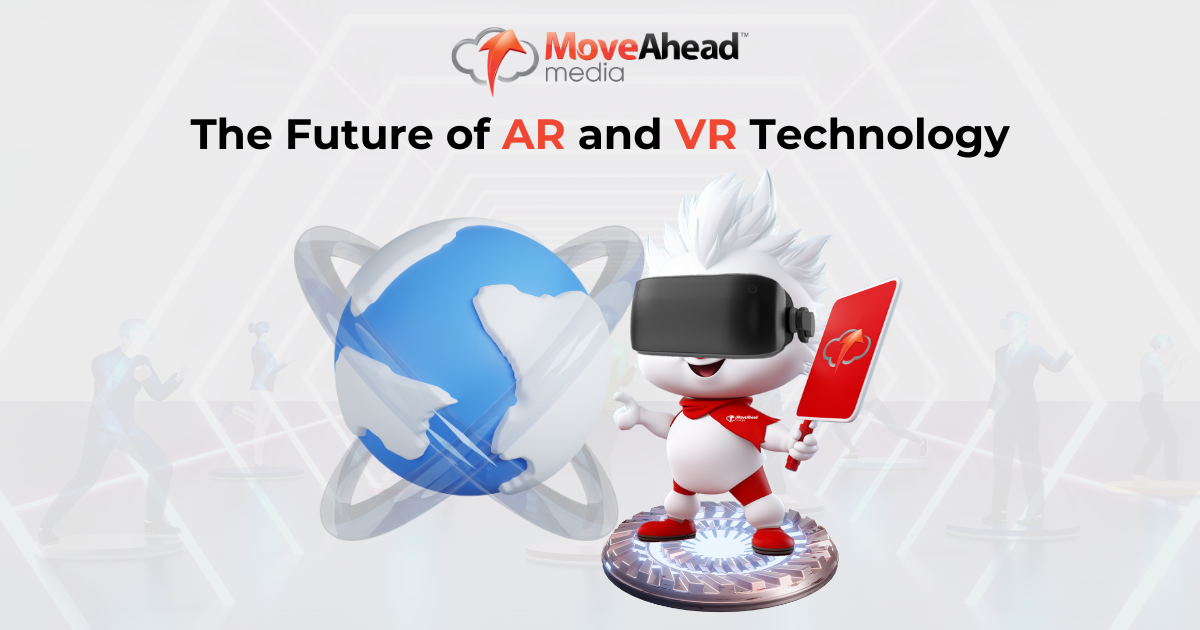
The Future of AR and VR Technology
Again, both AR and VR technology have the potential to revolutionise a number of industries, from healthcare and education, to entertainment and marketing.
With the immense speed at which new technology is being introduced, modified, and mastered, we can expect to see even more advanced AR and VR technology, with improved user experience, functionality, and affordability in the future.
- Augmented reality technology is likely to become more prevalent in our daily lives, with applications in fields such as education, healthcare, and retail.
- Virtual reality technology is expected to continue to advance, particularly in the realm of gaming and adult entertainment.
- The two technologies are likely to converge, with AR and VR elements being combined to create even more immersive and interactive experiences.
Conclusion
In conclusion, AR and VR are two very distinct and exciting technologies that have immense potential. While they share some similarities, it’s important that you understand the key differences between the two – especially if you plan to leverage them for your brand and business.
In any case, we hope that you’ve found this article enlightening and that you now have a much clearer idea as to what both AR and VR technologies are and how they differentiate from one another.
If you have any questions or would like to explore how we can help you embrace these innovative technologies in business today, simply contact us and one of our friendly representatives will be more than happy to help!

